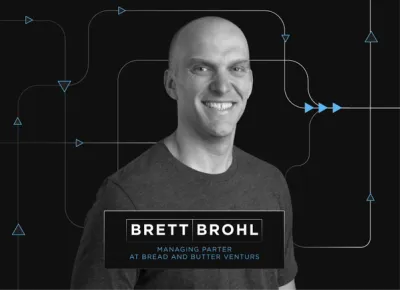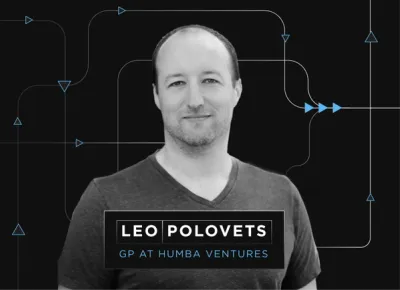
What does product-market fit really mean?
The first goal of every startup is to find product market fit. But what is product market fit in the first place? How do you know when you have it? The most famous and widely accepted definition of product market fit is one that Marc Andreessen coined in 2007, “Product-market fit means being in a good market with a product that can satisfy that market.” Andy Rachleff has expanded on this definition, adding that product market fit means identifying who you’re trying to serve (the market), what you’re going to offer (your product), and how you’re going to deliver upon that offering in a way that allows you to capture the value created by the product (your business model).

How do you achieve/find product-market fit?
Achieving product-market fit is about identifying needs in the marketplace and testing different ways of satisfying them. You must be thoughtful about how you can serve customers, and iterate quickly with your product based on their reaction to your offering. It’s also critical to understand your potential business model and how that relates to the market you’re trying to serve.
Learn how Yaw Aning, Founder of Malomo, found their first customers when searching for PMF below:
Defining Your Target Customer
The process of defining your target customer is the first step in finding product market fit. This step is about choosing your market. If you don’t know who you want to serve, you’ll have no idea what to build, and instead spend time and money on building a product that no one needs. It is key here to identify a sufficiently promising market. As this post by Andreessen Horowitz explains, a great product in a lousy market has no chance of succeeding, while a decent product in a great market has a much greater chance of finding product-market fit.

Identifying Your Value Proposition
Once you’ve identified a market and customer you’d like to serve, you’ll need to develop a value proposition to test in the marketplace. This value proposition does not have to be perfect. In fact, you should expect to iterate upon it and potentially decide to change it altogether. After all, the Twitter team started by building an app for podcasting, and Slack started off as a video game. If you assemble a talented team that works well together and don’t stop iterating, you can eventually identify the value proposition that makes sense for your market.
Building Your MVP
The MVP is designed to be your first entry into the market. Popularized by Eric Ries and his Lean Startup Playbook, an MVP is meant to help you test your value proposition. Today, many companies are using no-code or low-code platforms like WebFlow and Bubble to create basic versions of products and testing them in the market. These tools enable non-technical founders to test their ideas in the marketplace before building a full-fledged product with a team of engineers.
You often won’t know for sure if customers value your product until you put it into the market. This is why it pays to move quickly and release your product before you feel ready. This is especially true if your product is a mobile or web application that is easy iterate on (medical device or biotech founders should tread more carefully). Reid Hoffman, the founder of LinkedIn, has often said that ‘if you aren’t embarrassed by the first version of your product, you launched too late.’

Find Product-Market Fit Before Scaling
You should work to solve for product market fit before you worry about finding the perfect growth strategy. Andy Rachleff has said that you should work on solving for your value hypothesis before solving for your growth hypothesis. A 2011 study by Startup Genome found that 70% of the 3200 startups they studied scaled prematurely. To avoid being one of the 70%, focus on finding product market fit before you focus on growing your business. It’s tempting to raise giant sums of money and shoot for the moon – you just first need to make sure that you’ve built something in the right market that people really want.
Indicators of Product Market Fit
Once you’ve released your MVP into the wild and started iterating, you’ll likely wonder how to gauge whether you’re making progress toward product market fit. In fact, Facebook executive Alex Schultz has said that a major cause of startup problems happens when founders think they have product market fit, when they really don’t.
It’s easy to get caught up in vanity metrics that don’t indicate whether or not your product is succeeding. You should identify what metrics are real determinants of progress in the market – things like new revenue, customer retention, and NPS can be good examples of metrics to focus on. Perhaps the greatest measure of product market fit is your ability to grow without much investment in sales or marketing. Word of mouth growth is an outstanding sign that you’re on the right track. But, at the end of the day, product market fit is often clear. “As Eric Reis says, if you need to ask whether or not you have product-market fit, you don’t.”
Word of Mouth Growth
‘Word of mouth’ is a vague term that marketers use to describe the phenomena that happens when your product grows organically based on positive reviews from users. It’s difficult to measure, but many agree that it is one of the most powerful forces in the marketing universe. If your product grows through word of mouth, without significant spending on advertising, it can be a great sign that you’re on the path to product-market fit. Keith Rabois recounts an excellent story about Square growing exponentially with every new hardware device that was sold. Other potential users were seeing the Square point of sale device in person and becoming customers. To Keith and Jack Dorsey, this was a clear sign that they were finding product market fit. In their case, they had found a clear path to viral growth as well.
Keep Testing to Find Product Market Fit
One of the best ways to find product market fit is by looking at the process through the lens of the scientific method. You can develop a hypothesis around what users will want and then test it in the market. By viewing it in this way, finding product market fit can become a game. This frees you to overcome the fear of shipping. Rather than trying to build the perfect product at the start, you can continue building as you gain more clarity based on market feedback.
When people like Reid Hoffman talk about the importance of shipping early, they don’t mean that you should intentionally create something terrible. Rather, you should err on the side of releasing your product into the market because the feedback you’ll receive in return will provide information that can either support or falsify your hypothesis. Sometimes, the feedback you get can take you down a new road altogether. Startups are cash constrained, and need to find product market fit before they run out of money. It’s often better to release too early and get this critical feedback before you blow through half of your cash on what you believe to be the perfect idea, only for it to backfire.
Related Resource: 7 Startup Growth Strategies
How can you tell when you've achieved product-market fit?
When product market fit happens, it sometimes feels magical. Other times, it’s less obvious. In a consumer application that is built on viral marketing, it may be glaringly obvious when you hit product market fit – growth rates might explode and you could have a quick hit on your hands. In other areas, the process might take longer. If you run an enterprise SaaS business with a 6+ month sales cycle, it will take longer to see the fruits of your labor. Tyler Tringas of Earnest Capital calls this “the long, slow, SaaS grind.” If product market fit isn’t always obvious, how do we know when we’re on the right track?
In the case of the SaaS app, it may be realizing that you’re gaining new customers via word of mouth, or churn rates are very low. In other cases, an incredibly well received MVP (minimum viable product) could be an indicator of potential product market fit. Finding product market fit can be more of an art than science, but there are some things you can watch out for.
How do you measure product-market fit?
At its core, product market fit means that you’ve built something that solves a real problem for people or businesses in a large enough market. When you have it, potential customers will often start seeking out you to use your product without the need of marketing spend. If you believe that you’ve found product market fit, and can reliably predict your customer lifetime value, it could make sense to step on the gas with sales & marketing spend as a part of your growth strategy. Paypal after all was burning $10M/month at one point in their journey as their customer acquisition strategy revolved around giving users a free $10 to use their product. If your customers are loving your product and it has a high lifetime value, then a Paypal-esque strategy may make sense. Regardless of your strategy for finding product market fit, here are 2 things to observe when measuring your progress:
Know Your Customer Lifetime Value
When measuring product/market fit, you’ll need to make sure that you’re in a market & selling a product that makes your customer lifetime value high enough to pursue for the long term. If you sell a SaaS product that costs $10/month on average, but costs $10/month to support due to its complex nature, then you probably don’t have product market fit. On the other hand, if you have a product that sells for $1000/month and costs $5000 to build up front, you could have an excellent win on your hands (provided that churn is sufficiently low). Pricing is one of the toughest things to figure out in startups, but it’s critical to be aware of your customer lifetime value & the potential size of your market when making early decisions.

What’s Your NPS?
NPS (net promoter score) is a way to evaluate how likely your customers are to recommend your product to other people in their network. It’s been heralded as a key metric to track in recent years to evaluate customer satisfaction and gauge how effectively their company will grow via word of mouth. While it’s not perfect (qualitative metrics are notorious for having variance), it’s still a good thing to measure to determine how well your product is resonating. You should also look at other indicators related to NPS. How excited are your customers about your product? Are they posting about it on social media, or telling you about how it’s changed their lives? What about churn rates? A high NPS with a high churn rate usually means that you’re missing the mark.
Improving product-market fit requires you to iterate
Iterating on product market fit, as we mentioned earlier, requires you to take action and evaluate the results of that action. This process mirrors the scientific method – you start with an insight, do background research to observe what’s already been done, and formulate a hypothesis in the form of an initial product that you release into the market. Even if you receive a lackluster response, you formulate a new hypothesis & iterate on your product, repeating this process.
Sometimes, you’ll find that you were totally off in your initial product, or that your product was used in unexpected ways. If everyone knew how the market would react to new product offerings, there would be no point in building and developing new products! This is why it’s critical to get your product into the hands of users early to test your offering.
Most software businesses are perfect for this model – it helps to produce products that can be iterated upon immediately. Companies that produce hardware or more security-intensive products can also benefit from demonstrating prototypes to early adopters and getting early feedback on your concept, or offering pre-orders. The worst thing you can do is spend months or years building a new product that you realize nobody wanted. You’re better suited releasing an early version and building along with market feedback. Another great option is releasing an MVP and then launching a kickstarter campaign or offering pre-orders. Madelin Woods, a founder in our community, is a great example of this. She created prototypes of her burrito-eating tool ‘Burrito-Pop’ that generated buzz amongst friends & acquaintances. Her Burrito Pop Kickstarter fundraise generated enough funding to get version 1 to market.
Collect Data Consistently to Shorten Feedback Loops
Setting up short feedback loops is also critical. The more quickly you can get feedback from the market on your idea, the better, as compound interest applies to the iteration of products. You’re better off iterating 100 times on your offering, than spending 100s of hours on developing one version. It’s beneficial to keep an eye on metrics that are key indicators of growth & usage. At Visible, we measure key indicators of product engagement and conduct regular customer development calls when we build new product offerings. Mike, our CEO, will take demos and sit in on calls as we build. You can adopt the same mentality as you work to find product/market fit.
Build Quickly to Iterate Quickly
You can only iterate as fast as you can build. Using best practices for product development, we at Visible work in 6 week cycles where we choose key initiatives and ship product quickly. It’s key to have your product team working well together to ensure that your team is free to ship product on a consistent basis. Ryan Singer of Basecamp’s Shape Up provides an outstanding framework to help you ship product more quickly with less stress and headaches. The Visible product team endorses this process of development as it has helped us ship consistently on big projects every 6 weeks.

Be Ok With Changing Your Mind
As Winston Churchill said: “To improve is to change; to be perfect is to change often.” It’s critical to avoid the ‘sunk cost fallacy’ – continuing to invest in products just because you’ve already spent time or money on them. You must be willing to abandon projects or initiatives that no longer make sense for your business. Before you have product market fit, you cannot be too stubborn about the route you want your company travel. If Stewart Butterfield at Slack would have insisted on developing a video game, he could never have built the workplace app that runs thousands of companies around the world. This is challenging to do as a founder, as you and your team may need to abandon things you’ve worked hard on in exchange for something different. One of the greatest skills an early stage founder can have is inspiring their team to change directions when it’s needed.
Finding product market fit is the first challenge of building a company. If you stay focused on users, operate in a large enough market, and keep iterating, you’ll always have a chance. Once you have it, it’s time to pour more talent and capital onto the fire to grow your business – but that’s a topic for another day.




